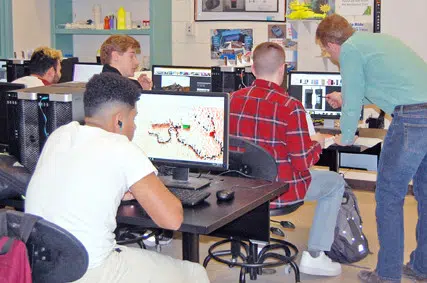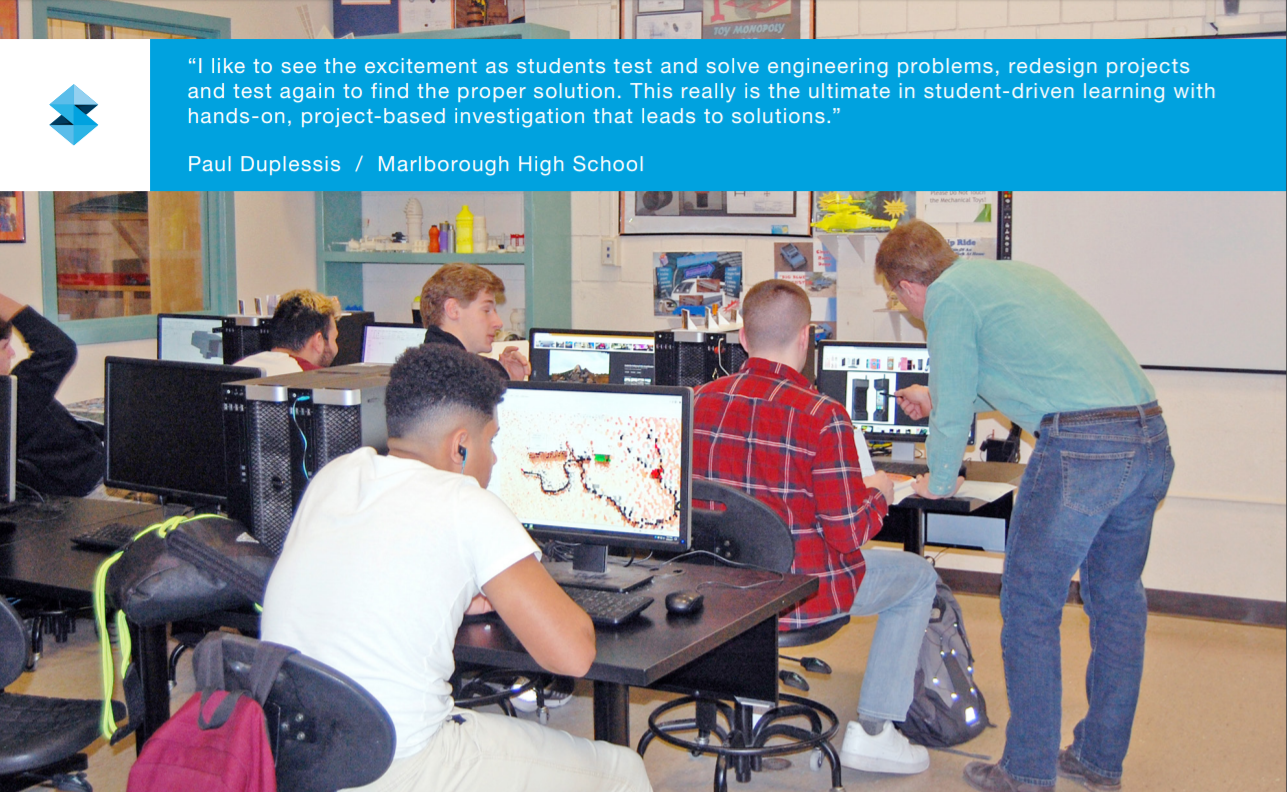Originally published by Stratasys, a global leader in applied additive manufacturing. AET Labs is happy to serve the New England education community as a Stratasys partner.
High-Level Learners
In 2011, Marlborough High School (MHS) in Massachusetts established their STEM Early College High School program after receiving a grant from the U.S. DOL and the Massachusetts Department of Education. The goal? Develop students’ critical thinking skills by offering a higher level of interdisciplinary learning on state-of-the-art equipment.
“What we’ve started to understand is the American workforce, especially in the high-skill industry sectors, is dwindling. In order to change that, we have to change the way we’re educating students,” said Dan Riley, Director, Marlborough Public Schools, STEM Early College High School.
Advanced engineering students are tasked with designing and 3D printing models of an amusement park ride.Student Driven
The specialized STEM curriculum at MHS immerses students in a rigorous learning experience, providing them with the skills essential for college and career readiness. MHS STEM students develop creativity, critical thinking, effective communication and strong collaboration skills through project-based learning and advanced classroom technology, including several uPrint™ 3D Printers.
Paul Duplessis, the engineering and technical drawing instructor, pushes STEM students to develop their design and problem solving skills by thinking creatively. “The transformation of students’ work can be remarkable, giving them a feeling of real ownership for the development of their design,” said Duplessis. STEM students are challenged to innovate using their skills in CAD, 3D printing, robotics and engineering to design projects that often must move, rotate or light up.
Helicopter toy model was designed and 3D printed by an MHS STEM student in engineering.“I like to see the excitement as students test and solve engineering problems, redesign projects and test again to find the proper solution. This really is the ultimate in student-driven learning with hands-on, project-based investigation that leads to solutions,” said Duplessis.
Linking STEM Across Disciplines
Not only does the engineering program incorporate 3D printing, math and English STEM classes have also found ways to bolster curriculum with it.
“When I started teaching the STEM English curriculum, I wanted to incorporate as many of the skills they’re learning in their engineering class as possible,” said Lindsay Shomphe, MHS English teacher. “Nowadays, everything is skills based, so it’s not ‘did you read this book,’ it’s ‘did you learn how to write a research paper, did you learn about analysis and characterization?’ I teach those same skills, just in a little different way.”
Shomphe weaves 3D printing into teaching classics like “Julius Cesar” by having STEM students design and 3D print models of the Globe Theatre, one component of a larger research project. She also teaches the play, “A Raisin in the Sun,” and has students create and print character symbols, adding another layer to the development of their characterization skills. By working 3D printing into her curriculum, Shomphe not only helps bolster the STEM program, she often inspires students not in STEM to get involved.
STEM students at MHS design and 3D print models of the Globe Theatre as part of a larger research project on Julius Cesar in their English class“It is neat to see kids who weren’t a part of the STEM classes getting excited about 3D printing and asking questions,” said Shomphe. “When they’re not in the program and they think it must be too advanced, when they see their peers doing it, they realize it is something they can do too.”
MHS also works closely with partners from local-area businesses to give students opportunities to develop practical skills in industry sectors including engineering and advanced manufacturing, computer science and health care. The combination of internships, advanced curriculum on cutting-edge technology and interdisciplinary collaboration gives MHS STEM students important tools for future success.
“Students need to know how to problem solve, how to think critically about the things presented to them, and maybe more importantly, students need to know how to fail,” said Riley. “If students don’t know how to pick themselves back up
again and see failure as an opportunity to grow, they won’t be as successful trying to accomplish what comes next, college and career.”
Marlborough’s Superintendent Maureen Greulich added, “It is amazing to see how far the work of our students has come and how truly revolutionary the landscape of education is. Aided by our business partnerships in this evolution, we are bringing opportunities to our students in new and exciting ways to prepare them for careers of the future.”
Courtesy of Stratasys A GLOBAL LEADER IN APPLIED ADDITIVE TECHNOLOGY SOLUTIONS


